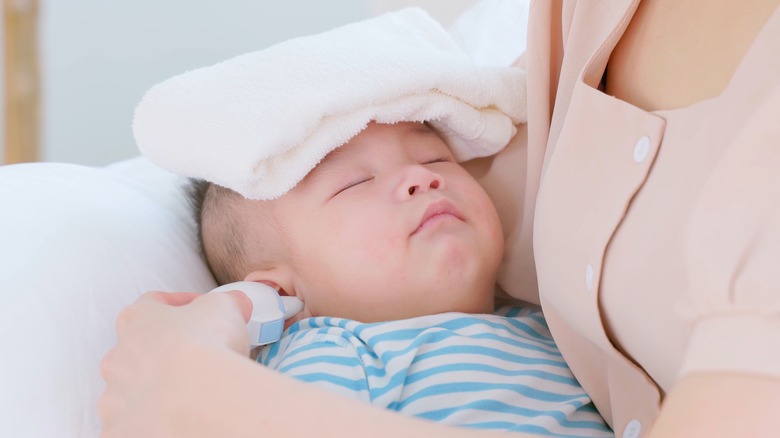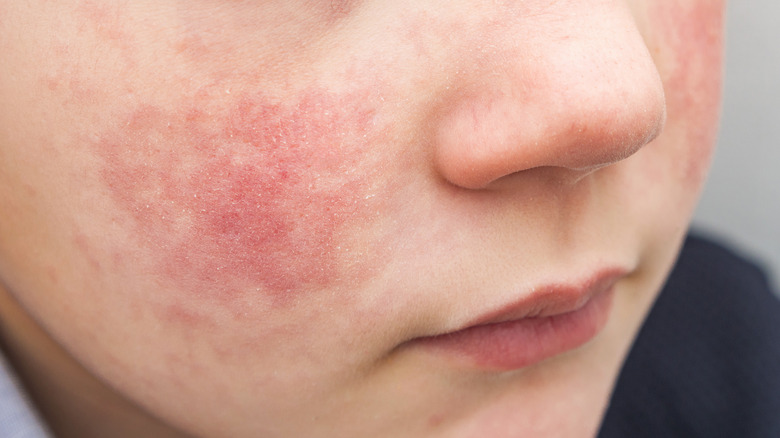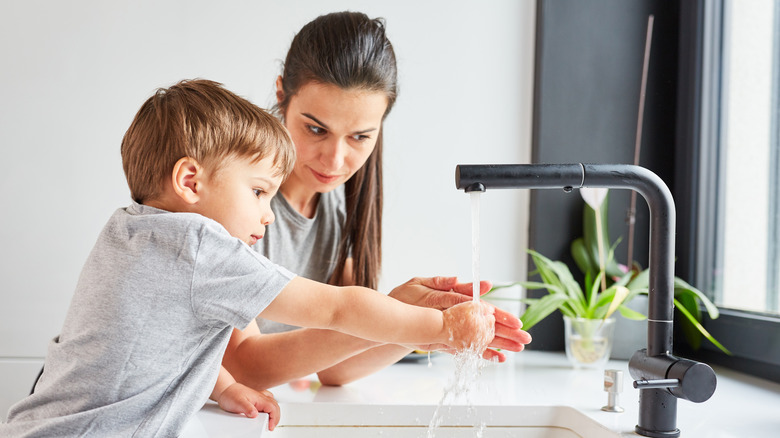What To Know About The Parechovirus And How To Keep Your Baby Safe
The Centers for Disease Control and Prevention (CDC) recently issued a warning about the growing number of parechovirus infections in the U.S. Human parechoviruses (HPeVs) are pathogens that circulate in the summer and fall, causing digestive or respiratory symptoms. Infants and newly born children are at higher risk of infection, but anyone can contract the virus. In severe cases, HPeVs may lead to seizures, meningitis, and damage to the nervous system.
About 5 to 6% of neonatal infections are caused by viruses, reports a 2015 study published in the Pediatric Infectious Disease Journal. In fact, researchers found that 11 out of 84 blood samples taken from preterm babies were infected with HPeVs, and six infants had respiratory symptoms. The virus may also cause fluid buildup in the lungs, bronchopneumonia, impaired kidney function, or even sepsis, according to a case report presented in the Brazilian Journal of Infectious Diseases. Keep in mind, children under the age of five are most vulnerable to infection.
So far, scientists have identified 16 subtypes of the human parechovirus, with HPeV 1 and HPeV 3 being the most common. Some variants may cause encephalitis, gastroenteritis, paralysis, or severe lung infections. Babies younger than three months are more likely to develop complications, warns the CDC. With that in mind, here's what you should know about parechoviruses and how to keep your child safe.
Human parechoviruses may cause non-specific symptoms
The human parechovirus is often asymptomatic, but some babies can encounter diarrhea, heart palpitations, skin rashes, or drowsiness, warns Children's National. More severe infections may cause high fever or seizures. These symptoms typically occur within three to 10 days after contracting the virus and can lead to serious complications, especially in infants.
Parechoviruses can even mimic viral encephalitis or brain inflammation, according to a 2014 study published in the Pediatric Infectious Disease Journal. In some cases, it may cause irritability, loose stools, or atrophic brain lesions. Babies infected with the parechovirus may develop neurological problems that can only be diagnosed with an MRI scan. It's also possible to experience difficulty speaking, blurred vision, headaches, involuntary muscle contractions, or muscle weaknesses, as described in a recent case report published in Cureus. However, these complications are rare.
"When you first get a clue that it might be parechovirus is if you see the rash," said pediatric infectious disease specialist, Dean Blumberg, in an interview with NBC News. The rash can affect the whole body or cause small bumps in specific areas. According to Dr. Blumberg, most children can recover without treatment. However, it's crucial to see a doctor if your baby is experiencing seizures or has a fever.
Is it possible to prevent the parechovirus?
The parechovirus can spread via fecal-oral contact, as well as through the air, explains the CDC. For example, children may contract the infection by touching contaminated surfaces in group-daycare settings. Therefore, it's important to remind your child to wash their hands properly, especially before meals and after using the restroom. If you have a baby, wash or sanitize your hands after changing his diapers. Stay on the safe side and use hand sanitizers with at least 60% alcohol, recommends the Cleveland Clinic.
Unlike COVID-19, HPeVs cannot be prevented with a vaccine. What's more, there's not enough evidence to support the use of antiviral drugs for treating parechovirus infections, according to a 2016 review published in the European Journal of Pediatrics. The best thing you can do is take the same precautions you would take to prevent the novel coronavirus. Cover your mouth when sneezing or coughing, disinfect your child's toys, and clean your hands as often as needed. Most importantly, watch out for any signs of infection and call your doctor sooner rather than later.



